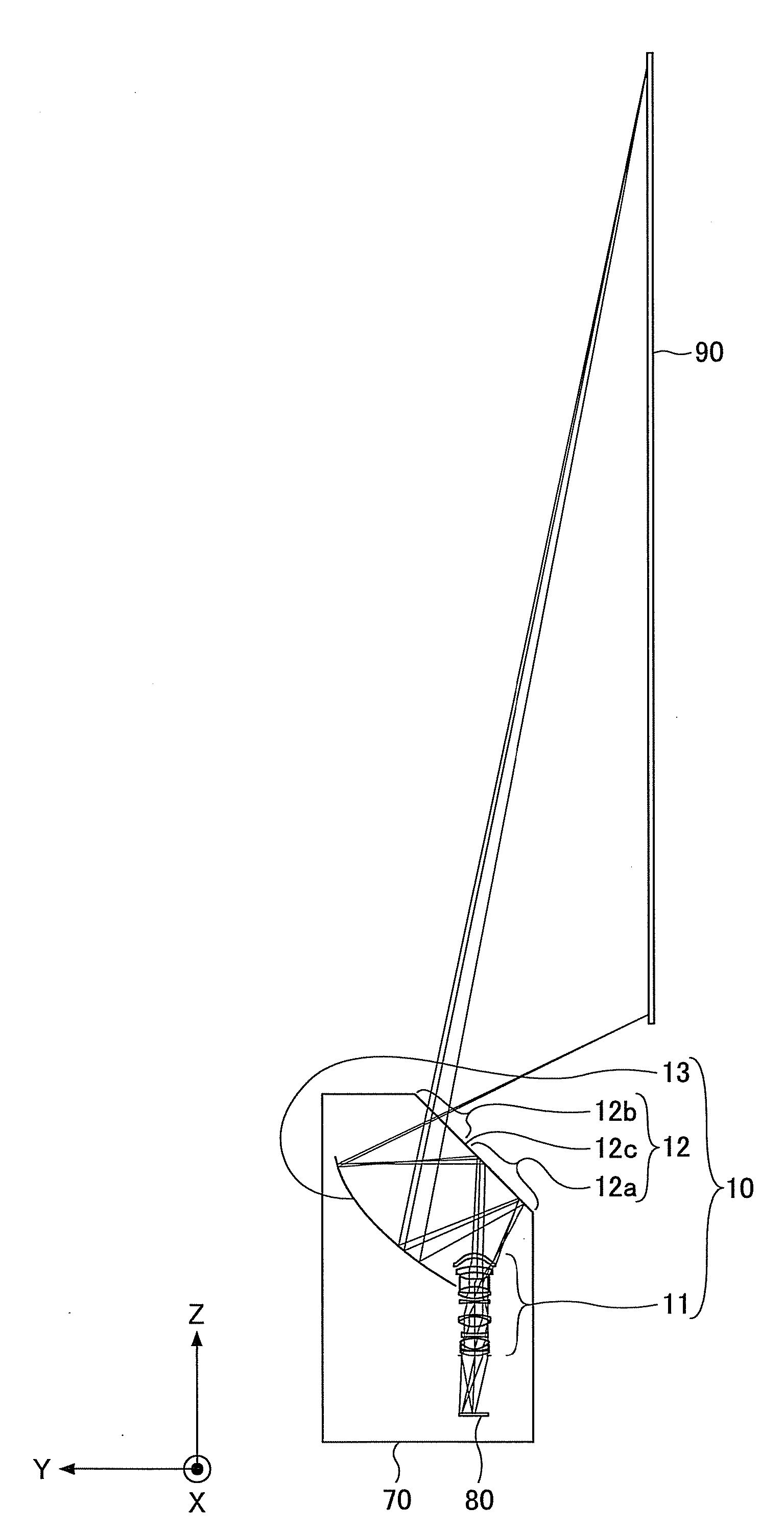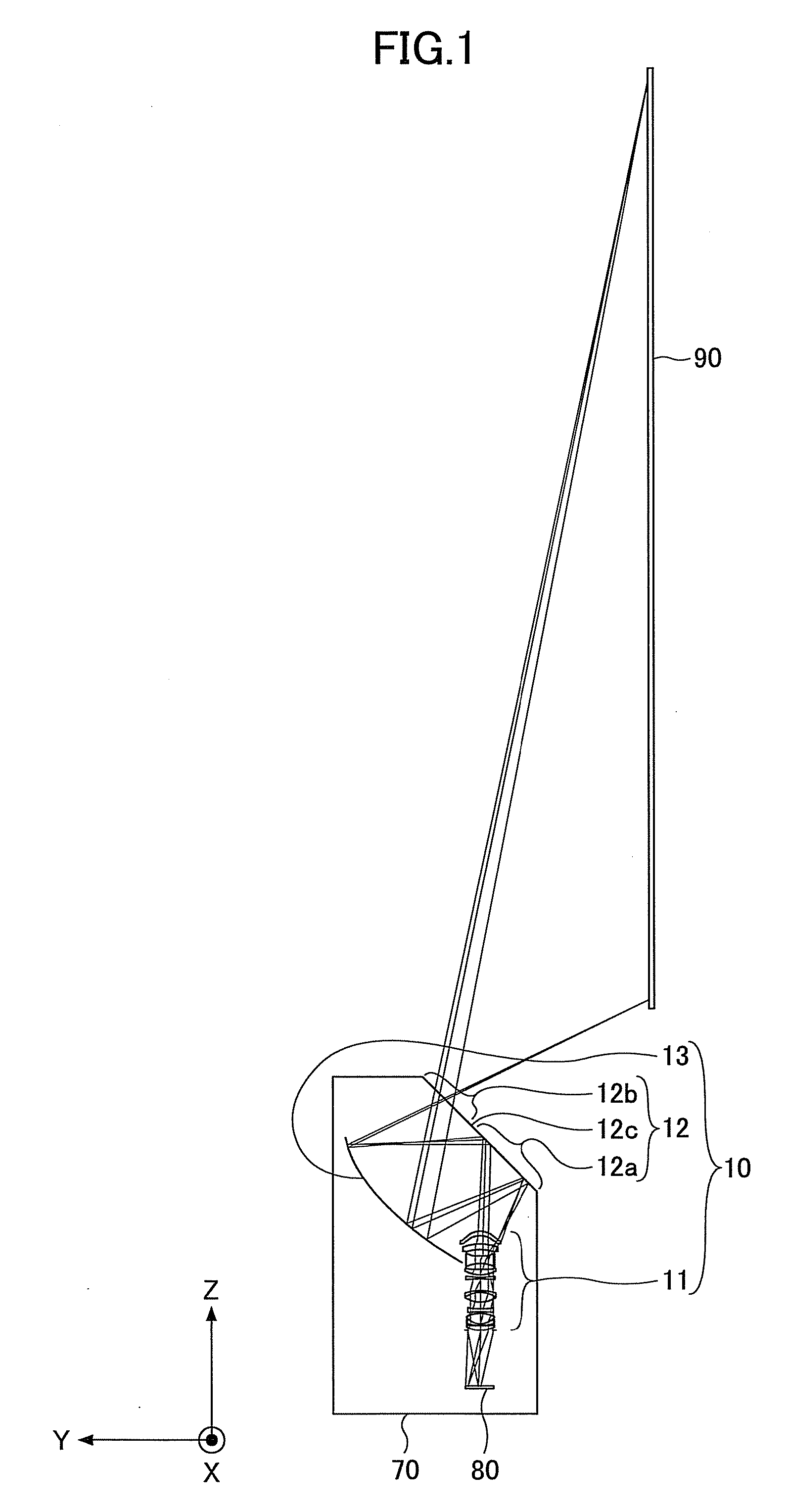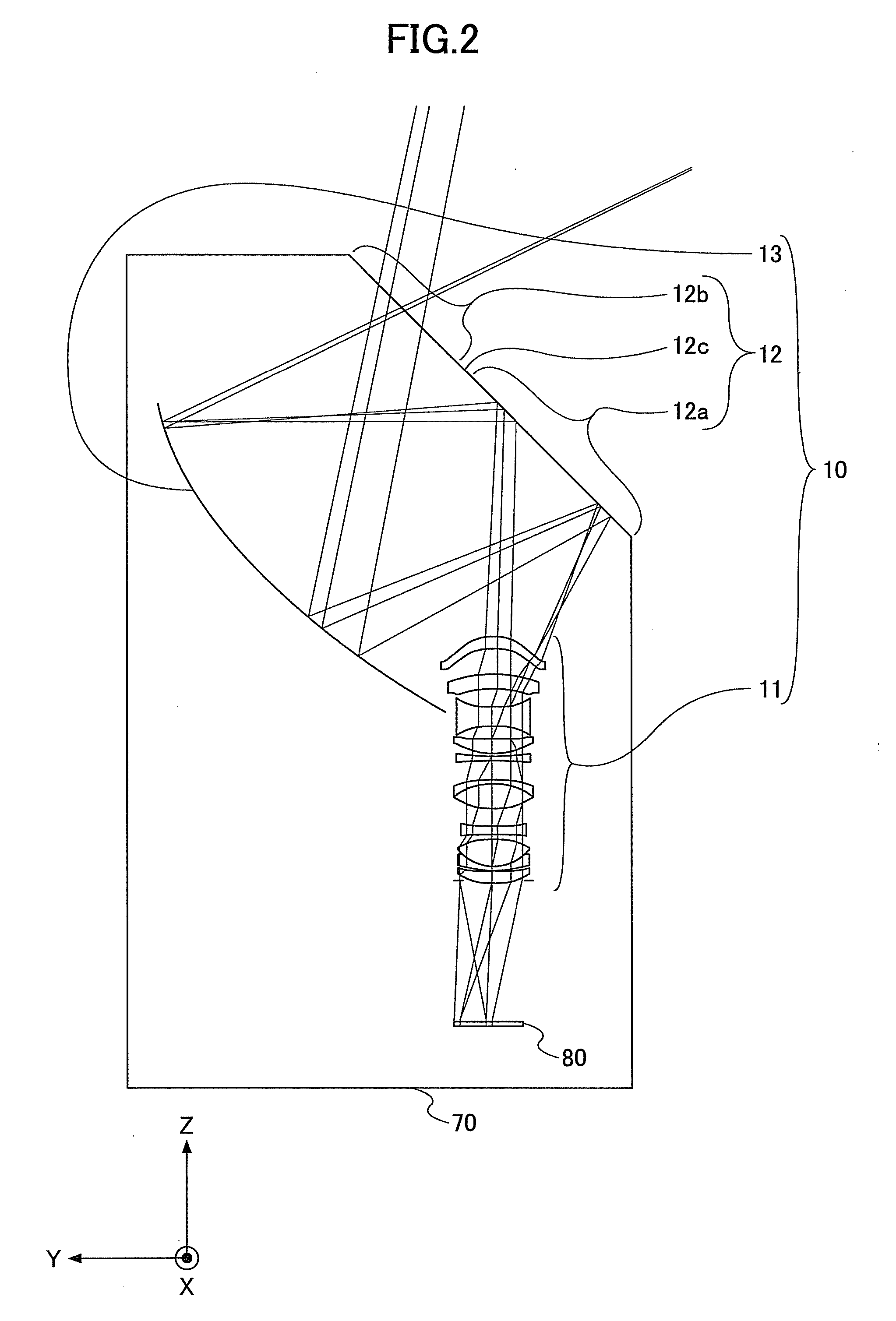Projection optical system and image projector
a technology which is applied in the field of projection optical system and image projector, can solve the problems of dust deposition, inability to use at a distance from the projection surface,
- Summary
- Abstract
- Description
- Claims
- Application Information
AI Technical Summary
Benefits of technology
Problems solved by technology
Method used
Image
Examples
first embodiment
Second Variation of First Embodiment
[0063]In the first variation of the first embodiment, the case is illustrated where the second optical system 12 is divided by the nonlinear boundary 12c. In a second variation of the first embodiment, another case of dividing the second optical system 12 by the nonlinear boundary 12c is illustrated.
[0064]FIG. 7 is a diagram illustrating the second optical system 12 in a normal direction of the reflection region 12a according to the second variation of the first embodiment. In FIG. 7, the shape of an image at a time when rays of light that have passed through the first optical system 11 are made incident on the second optical system 12 is indicated by a broken line, and is referred to as “image shape 11x.”
[0065]Since the reflection region 12a of the second optical system 12 may have a shape corresponding to the image shape 11x, the boundary 12c between the reflection region 12a and the transmission region 12b may be curved along the image shape 11...
second embodiment
[0069]In the first embodiment, the case is illustrated where the second optical system 12 is planar (flat). In a second embodiment, a case of bending the second optical system is illustrated.
[0070]FIG. 9 is a ray diagram illustrating a projection optical system according to the second embodiment. FIG. 10 is an enlarged view of part of FIG. 9. In the coordinate system in FIG. 9 and FIG. 10, X, Y, and Z denote the long axis directions, the normal directions, and the short axis directions, respectively, of the screen 90.
[0071]Referring to FIG. 9 and FIG. 10, a projection optical system 20 is different from the projection optical system 10 (FIG. 1 and FIG. 2) in having a second optical system 22 that replaces the second optical system 12.
[0072]The second optical system 22 includes a reflection region 22a and a transmission region 22b. The second optical system 22 is so attached as to close the opening of the housing 70. The second optical system 22 is bent at a boundary 22c between the ...
third embodiment
[0083]In the first embodiment, the case is illustrated where the second optical system 12 is flat, and in the second embodiment, the case is illustrated where the second optical system 22 is bent. In a third embodiment, a case of tilting the transmission region toward a screen in the second embodiment is illustrated.
[0084]FIG. 15 is a ray diagram illustrating a projection optical system according to the third embodiment. FIG. 16 is an enlarged view of part of FIG. 15. In the coordinate system in FIG. 15 and FIG. 16, X, Y, and Z denote the long axis directions, the normal directions, and the short axis directions, respectively, of the screen 90.
[0085]Referring to FIG. 15 and FIG. 16, a projection optical system 30 is different from the projection optical system 20 (FIG. 6 and FIG. 10) in having a second optical system 32 that replaces the second optical system 22.
[0086]The second optical system 32 includes a reflection region 32a and a transmission region 32b. The second optical syst...
PUM
 Login to View More
Login to View More Abstract
Description
Claims
Application Information
 Login to View More
Login to View More - R&D
- Intellectual Property
- Life Sciences
- Materials
- Tech Scout
- Unparalleled Data Quality
- Higher Quality Content
- 60% Fewer Hallucinations
Browse by: Latest US Patents, China's latest patents, Technical Efficacy Thesaurus, Application Domain, Technology Topic, Popular Technical Reports.
© 2025 PatSnap. All rights reserved.Legal|Privacy policy|Modern Slavery Act Transparency Statement|Sitemap|About US| Contact US: help@patsnap.com



